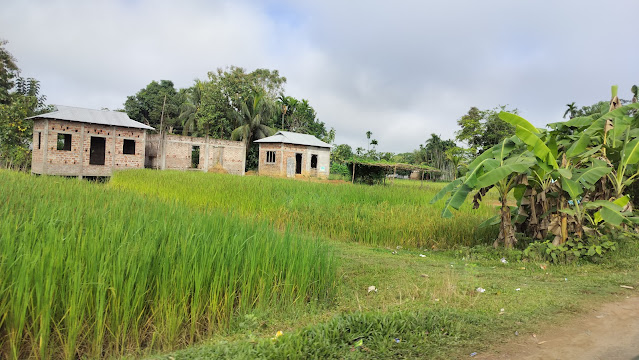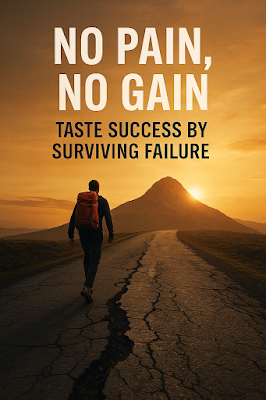Turning 30 is often seen as a major milestone in life.
Society, family, and even our inner voices sometimes suggest that by this age,
we should have a clear career path, financial stability, and a clear sense of
purpose. But for many people, life doesn’t unfold as neatly. If you’re over 30
and still unsure about your career direction, you’re not alone—and you’re
definitely not out of options. This article explores why it’s never too late to
find your passion and purpose, along with actionable steps to start your
journey toward a fulfilling career at any age.
Why Starting Late
Doesn’t Mean Failure
Many people believe that career success is only for those
who start young. However, this way of thinking often results in missed
opportunities. Studies show that people who switch careers later in life often
bring unique perspectives, greater resilience, and an ability to learn from
past experiences. Well-known figures like Vera Wang, who became a designer in her
40s, and Colonel Sanders, who started KFC at 65, are proof that age is just a
number.
If you feel lost at 30 or even 40, don’t worry. With
dedication, direction, and a growth mindset, you can start a fulfilling career
now.
How to Find Direction
After 30
Finding career direction is a personal journey that requires
self-reflection, exploration, and strategic planning. Here are some steps to
guide you in identifying your path:
1. Reflect on Your
Strengths and Passions
Begin by understanding what drives you. Ask yourself:
What do I enjoy doing?
What am I naturally good at?
What kind of work feels rewarding to me?
Sometimes, your strengths lie in the hobbies you enjoy or
the activities you pursue in your free time. By identifying your strengths and
passions, you’ll have a clearer picture of what could make a fulfilling career.
2. Assess Your Skills
and Experiences
At 30, you have the advantage of years of experience,
whether through jobs, education, or life experiences. Make a list of the skills
you’ve acquired, including both hard skills (like coding, writing, or project
management) and soft skills (like communication, empathy, or leadership).
Many people find that they possess valuable transferable
skills that can be applied across industries. This is especially true if you’re
looking to enter a new field. For example, communication skills gained in
retail can be valuable in sales or customer service roles, while
problem-solving abilities from management experience can apply in a variety of
fields.
3. Explore Growing
Industries and Emerging Fields
The job market is constantly evolving, with new fields and
roles emerging every year. This creates opportunities for people over 30 to
enter careers that didn’t exist a decade ago. Some high-growth industries to
consider include:
Technology and Data Science : Jobs in AI, data analysis, and
software development are on the rise.
Healthcare : Roles like healthcare management, telehealth, and
counseling offer stability and demand.
Renewable Energy : Solar and wind energy are gaining traction
and offer careers in engineering, project management, and environmental
science.
E-commerce and Digital Marketing : As online shopping grows,
opportunities in SEO, social media, and digital strategy continue to increase.
Conduct research on these fields to understand their entry
requirements and opportunities, and evaluate which align with your interests.
4. Consider Additional Education or Certification
While experience is valuable, adding new skills can give you
a competitive edge, especially if you’re switching fields. Online platforms
like Coursera, Udemy, and LinkedIn Learning offer affordable courses that allow
you to upskill or reskill without the commitment of a traditional degree.
Certifications in digital marketing, project management,
coding, or finance can open doors to new roles or help you gain confidence in a
new industry.
5. Network and Seek Mentorship
Networking is crucial in today’s job market. Leverage
platforms like LinkedIn to build connections with professionals in your target
industry. Reach out to people for informational interviews to learn about their
experiences and insights. Attend industry events, workshops, and webinars to
expand your network and knowledge.
Mentors can also be invaluable. A mentor with industry
experience can offer you guidance, feedback, and support as you navigate your
new path. Don’t hesitate to ask for help; most people are happy to share their
knowledge and experiences with others seeking direction.
6. Establish Practical
Goals and Create a Plan
Once you have an idea of the direction you’d like to pursue,
set achievable goals. Break down your long-term career vision into small,
actionable steps. For example:
Short-term Goals : Complete a certification, update your
resume, and begin applying for jobs.
Medium-term Goals : Gain relevant experience, either through
internships, freelancing, or entry-level roles.
Long-term Goals : Secure a position that aligns with your career
aspirations and continue to grow within the field.
A well-defined roadmap keeps you motivated and focused.
Remember, success is rarely immediate, so stay patient and persistent.
7. Embrace Flexibility and Resilience
The journey of career change is rarely straightforward, and
there will be obstacles. Financial limitations, self-doubt, and rejection are
common experiences. Embrace flexibility by keeping an open mind about roles that
may not fit your “ideal job” but offer valuable experience and connections.
Building resilience is key; remember, setbacks are a natural
part of any worthwhile journey. Learn from every experience and keep pushing
forward with your goals in mind.
Real-Life Success Stories to Inspire You
For motivation, consider these inspiring examples of late
bloomers:
J.K. Rowling was a
struggling single mother in her 30s before she published *Harry Potter* and
achieved global success.
Ray Kroc worked as a
milkshake device salesman into his 50s before turning McDonald’s into an
international empire.
Andrea Bocelli began his
career as a singer at 34 and became a world-renowned tenor.
These stories demonstrate that it’s never too late to find
purpose and fulfillment. The right attitude, determination, and perseverance
can lead to career success and happiness, regardless of age.
In Conclusion: It’s
Never Too Late
Remember, success doesn’t have an expiration date. Your
unique life experience, skills, and determination are assets, not obstacles.
Take your journey one step at a time, and keep in mind that every small action
brings you closer to a more fulfilling career.
Action starts now : the next stage of your career is waiting
for you to make the first move. Embrace the possibilities, stay committed, and
remind yourself that the best time to start is today.



















